Singapore Public Libraries: Past, Present and Future
From programmes and initiatives targeted at children, to courses and senior-friendly print material for the elderly, and even mobile bus services for those with special needs, the public libraries of Singapore have been tirelessly serving and engaging residents of the nation.
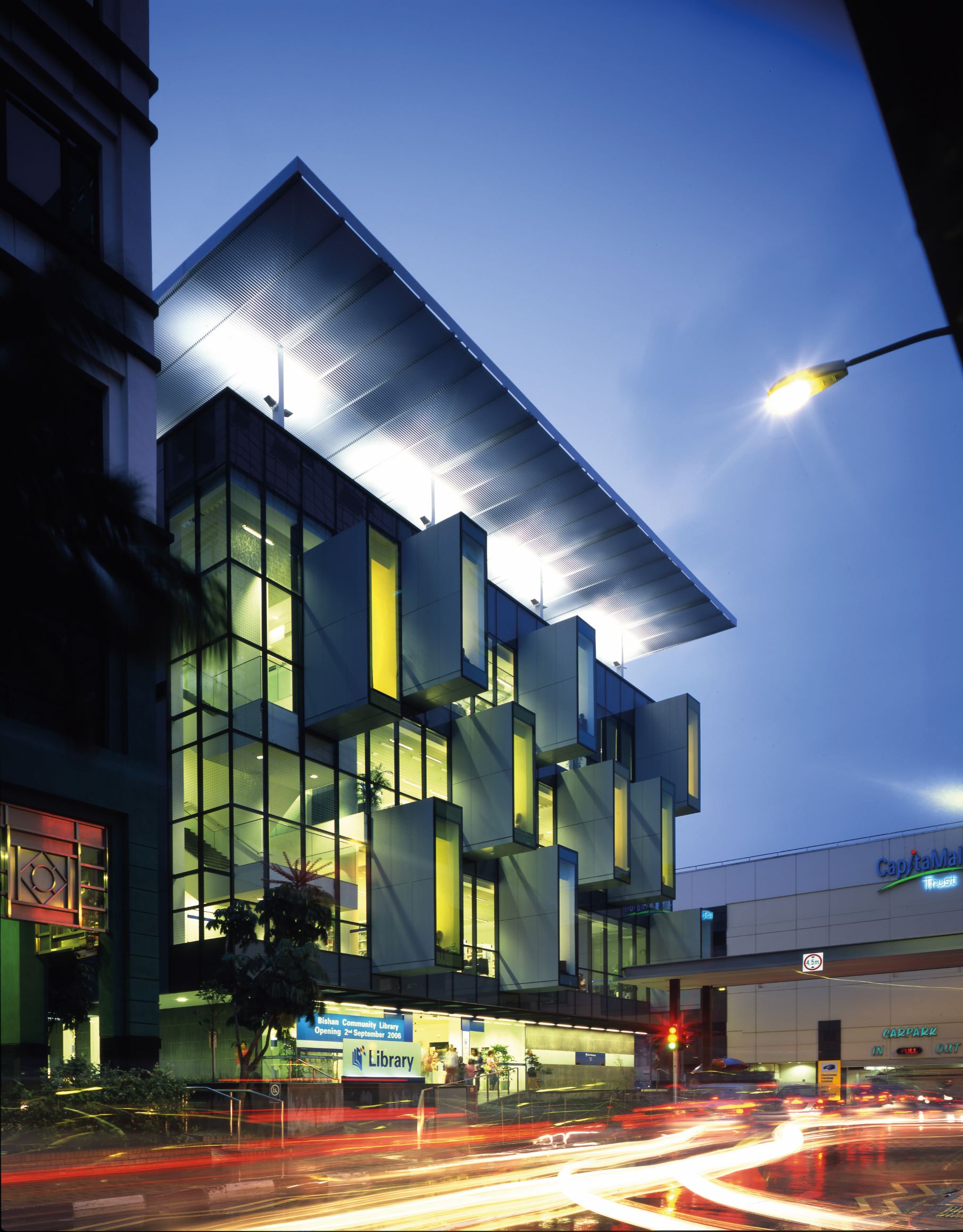
Public libraries in Singapore can trace their roots to 1823 when the foundation stone of the library of Singapore’s first English-language school, Raffles Institution, was laid. This library later became part of the Raffles Museum, and eventually moved into premises on Stamford Road in 1960 after becoming the National Library. Singapore’s public libraries thus began as part of the National Library group of libraries and each branch was seen as an extension of the National Library on Stamford Road.
The National Library Board (NLB) was formed on 1 September 1995, and today oversees the National Library, Public Libraries and the National Archives.
Public libraries have come a long way from being mere satellite branches of the National Library. The current range of services and infrastructure within public libraries have been developed to support the Libraries for Life master plan, which aims to see libraries into 2020.
Building Libraries for Life
Under the Library 2000 plan,1 which was conceptualised in 1996 by the Library Review Committee, an extensive and ambitious building programme was implemented to make libraries and information more accessible, with the aim of expanding the nation’s learning capacity. From just seven public libraries, the public library system grew at an incredible rate into a three-tier structure consisting of three regional libraries, 10 mid-size libraries and 12 small libraries.
Today, the mid-size and small public libraries provide information and library materials as well as programmes to meet the needs of the people living in the surrounding areas every day of the week. Accessibility for the residents is key.
Regional libraries, on the other hand, with extensive collections including reference materials and services, cater to a wider catchment area and more specialised information needs.
Located in Chinatown, the most recent public library opened on 31 January 2013 as a themed library specialising in Chinese arts and culture, with its own unique and carefully curated collection. This is the first public library to be privately funded and staffed by volunteers. The next library expected to open its doors in 2014 is library@orchard, located in the heart of Singapore’s shopping district, Orchard Road. This is our first public library planned and conceptualised through design thinking.
Libraries in Singapore have always been considering how to redefine and design their spaces. An example is the creation of a dedicated space in 2004 for the Teens Library Service at Jurong Regional Library called “Verging All Teens”. This space and the services offered were planned, designed and managed by teen volunteers.
Another example is the Bamboo Garden at the Central Public Library. It was designed to maximise the use of library spaces, allowing visitors access to sculptures in the garden as well as NLB’s heritage – 5,000 bricks from the facade of the former National Library on Stamford Road are located there.
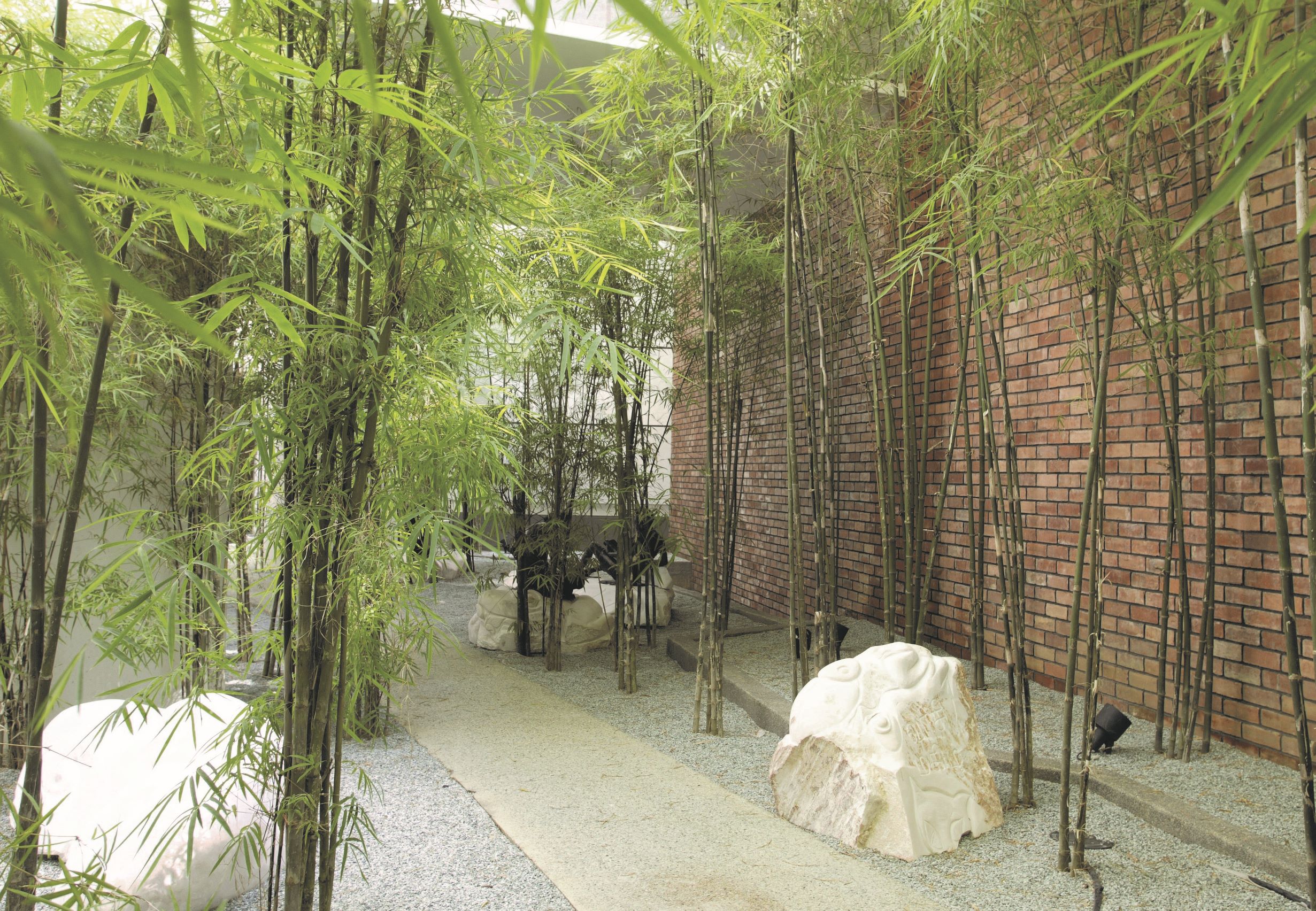
Much excitement surrounds My Tree House – the world’s first green library for children housed at the Central Public Library. This environmental library features a green collection, green programmes and a green design.
Readers for Life
**[C]ollaboration with partners and with the public and community as volunteers has become a pillar for the accomplishments of the public libraries.**
The goal of promoting a love for reading among Singaporeans has always been a part of the public libraries’ culture and mission. This goal is now one of NLB’s key initiatives: Reading, Learning and Info-Literacy. Under this umbrella, programmes tailored for specific needs of different customer groups are in place and being developed to support early literacy, youth and senior services. To achieve this and other goals, collaboration with partners and community volunteers has become a pillar for the accomplishments of public libraries.
Current and planned efforts to encourage reading among children differ from past efforts in that current strategies utilise a more integrated approach to equip educators and support parents in the development of early literacy. Thematic activity toolkits allow educators to use storybooks and audiovisuals to spark interest in reading. There are advocacy packages for parents to engage children through fun activities such as talking, singing, playing, reading and writing. Low-income parents, in particular, can receive ready resources to use with their children.

In addition, public libraries are in the process of setting up an early literacy library (within the Jurong Regional Library) for children below six and their parents. This will be a space where parents can learn about early literacy practices that will help the development of pre-reading skills in their children. To this end, public libraries are partnering like-minded organisations to provide programmes, resources and services.
Engaging youths or teenagers has been challenging for our libraries. In partnership with the Ministry of Education, the Whole School Reading Programme was piloted at 14 schools from 2010 to 2011. A full range of reading packages and activities was developed and this will be rolled out to 330 schools over the next five years to strengthen and raise literacy and reading skills.
Singapore’s ageing population has highlighted the need to provide for this segment of our society. Going beyond providing collections with large printed fonts, the libraries are now exploring and providing more senior-friendly content and formats such as audio and e-books. The accessibility of libraries is also critical, and a team of librarians have been dedicated to bring library services out of the libraries to spaces where seniors congregate, such as wellness centres, hospitals and homes.
To this end, the Silver Infocomm Junction was set up at the Woodlands Regional Library in November 2012. This was a collaboration with the Infocomm Development Authority of Singapore with the aim of creating a learning space dedicated to seniors where they can pick up IT skills such as web surfing, social networking and photo or video editing. Silver Infocomm hotspots have been set up for seniors to encourage greater use of multimedia stations and internet services.
Creative Reading Programmes
Read.Write.Tell is a national reading and storytelling movement under the Arts & Culture Strategic Review. This encompasses reading clubs in schools, the community and organisations as well as writing communities and programmes. The goal is to cultivate a love for reading and provide opportunities to write and tell stories about Singapore. Older reading clubs focused on reading and sharing, while this new movement makes writing a deliverable for the 25 Read.Write.Tell communities.
The NLB launched its first-ever nation-wide reading initiative, READ! Singapore, in 2005. This initiative, adapted from highly successful reading programmes around the world, encourages communal reading, followed by facilitated discussions on the selected stories. READ! Singapore’s target audience was initially Singapore residents aged 15 and above. In 2012, it expanded to include younger audiences aged 7 to 14 and introduced MobileRead, a free mobile application that provides access to selected content and enables reading while on the move.
kidsREAD is a national project that, together with the People’s Association and community self-help groups, promotes reading and good reading habits to children from low-income families, aged 4 to 8. Volunteers aged 15 and above form the backbone of kidsREAD. They read to children in Reading Clubs located at centres, kindergartens, homes, welfare organisations and primary schools. In 2012, it was proposed that children would remain in the kidsREAD programme until they completed Primary 2, instead of graduating after a year in the programme.
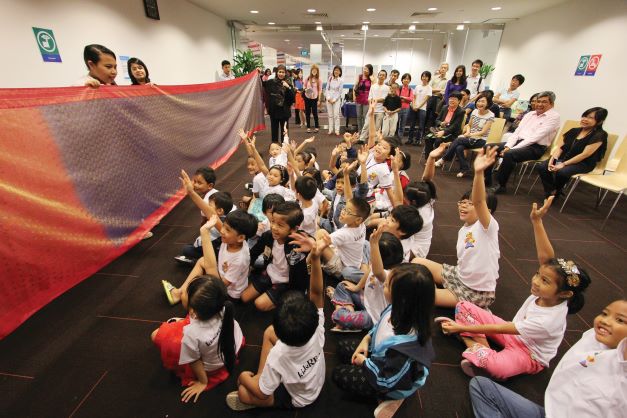
Creating Next-Generation Libraries
Growing Readers for Life also requires creating next-generation libraries. This goal involves strengthening the role of libraries as well-loved spaces, and providing equal access to knowledge for everyone. It also includes having libraries serve as social touchpoints for community engagement.
Thematic Libraries
Building on the already large network of public libraries, and in order to develop the next generation of libraries, thematic libraries are being set up in existing library spaces. The goal is to cater to more diverse interests of the reading public and encourage further levelling up of reading and learning in special subject areas.
For example, Jurong Regional Library has been selected to be an environmentally themed library. It will develop special collections, programmes, exhibitions, facilities and services on the subjects of green initiatives, sustainability, recycling and conservation to a depth and range beyond that of other public libraries in Singapore.
The Asian Children’s Literature Collection was launched at Woodlands Regional Library in April 2012. Its 23,000 volumes include a selection of 800 books in handwritten, out-of-print fairytale classics in various Asian languages. This collection has been recognised by UNESCO under its list of Nationally and Internationally Significant Collections.
Other themes include financial literacy at Tampines Regional Library, where the SGX Investment Knowledge Gateway has been housed since April 2013. This learning facility was born out of working with partners to offer interactive financial tools that would provide information on personal financial planning, together with a collection of business and finance books, and free financial literacy programmes.
Mobile Libraries
A mobile library service was launched in 1960 with two mobile libraries known collectively as the Library Extension. This increased to 12 mobile library service points that served about 20 percent of public library members as there were insufficient branch libraries to serve the ever-growing population. After the first eight public library branches were set up, mobile library services were reduced and eventually terminated in 1991.
In 2008, Molly (a mobile library in a custom-designed bus) was introduced, providing wireless mobile library services and specifically targeting the underserved. Molly-Reloaded was launched in 2012 to further extend the reach of libraries and to serve a wider community. New features of the updated Molly include eight iPads for access to eResources, an internal bookdrop and upgraded borrowing stations for visitors to borrow items from the 3,000-item-strong collection. Molly visits usually include storytelling, puppetry and other activities. Future plans include a mini-Mobile Library to go where Molly is unable to go, as some schools and venues are unable to accommodate a full-size bus. Special-education schools are one of Molly’s key targets, while visits are also made to orphanages, schools and homes.
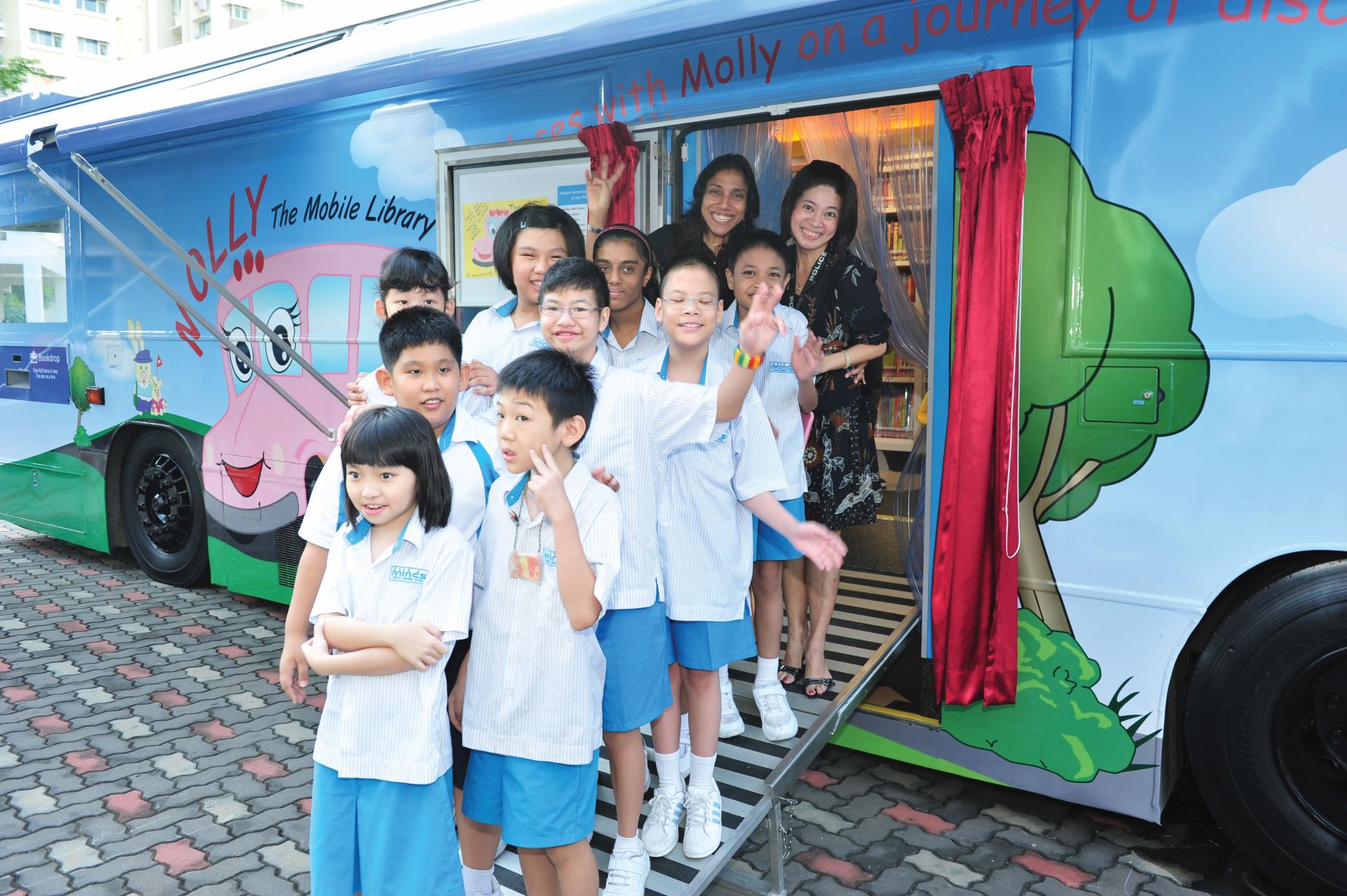
Public Libraries As Social Touchpoints
All public libraries are positioned as social touchpoints for the community to interact with or have the opportunity to collaborate on arts and culture, whether in terms of creation or appreciation.
To provide Singaporeans with regular opportunities to learn about different art forms, a series of Arts & Culture 101 sessions comprising performances, workshops and talks relating to various art forms are held. These sessions leverage on libraries as touchpoints and are curated and facilitated by newly trained Cultural Concierges (librarians who answer queries pertaining to arts and culture).
Digital Library Initiatives and New Media
Public libraries everywhere are being challenged to engage the digital generation within their preferred spaces and adapt to new technologies. Singapore’s public libraries have a vibrant presence on social media.
One of the earliest efforts was a blog to commemorate the relocation of library@orchard in 2007. There is also a library blog featuring music, dance, theatre and film curated by library@esplanade, the performing arts library.
Blogs such as High Browse Online recommends good reads and provides updates on books and reading. Read & Reap is a blog with excerpts of literary texts to inspire readers to move beyond reading to provoke questions and conversation. This blog complements the posters and toolkits made available to parents and educators. The ASK (Actively Seeking Knowledge with Public Libraries Singapore) blog showcases interesting queries received via the ASK! Service (an advisory and enquiry service) at public libraries.
All the individual libraries have their own Facebook accounts, and there is also a Public Library SG Twitter account and a Public Library SG Instagram account, all launched in 2012.
READ! Singapore has its own website and Facebook page to highlight the nationwide reading initiative. Volunteers have their own Friends of the Library portal where they can pick and choose their volunteer opportunities, and they, too, have a Facebook page.
From 2012, public libraries also made available a free loan service for iPads, Kindles and Tumble Books Playaways at Bedok Public Library as well as iPads at Bukit Merah Public Library to enrich readers’ reading experiences and expose them to a range of new reading platforms.
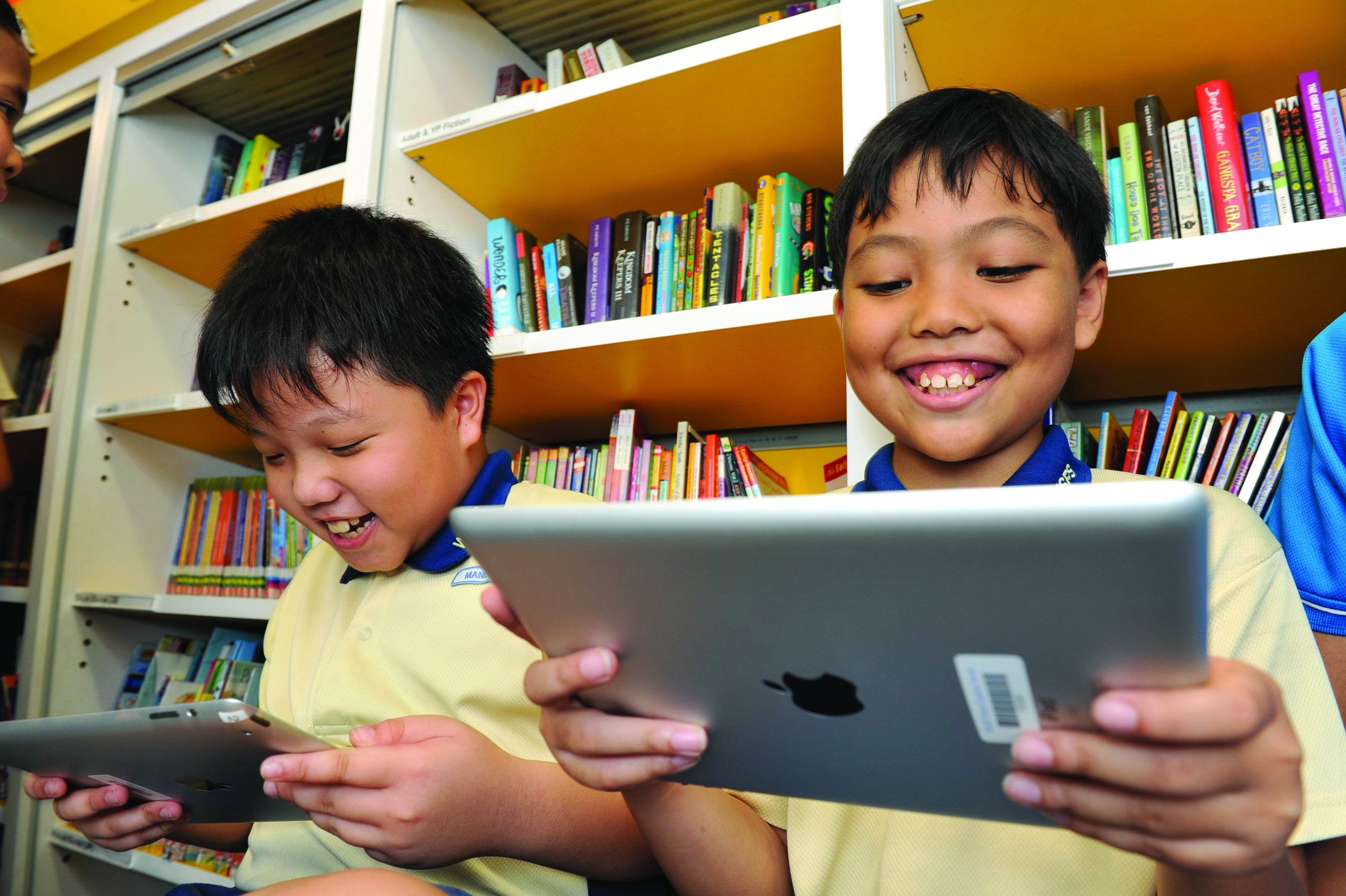
**“The only thing that is constant is change.”
— Heraclitus**
— Heraclitus**
Library spaces will transform even more in the future due to changes in the way people access and share information. This inescapable fact has led to the next phase of development in public libraries that is being conceptualised in a new plan – the Library 2025 Plan. The need for this is based on factors such the completion of the implementation of the Library 2000 plan in 2014, changing user needs and technological changes, as well as a projected increase in Singapore’s population by 2025.
Mobile devices and the internet have impacted the way people access information. Instant gratification and needing information on the go is now a norm. The way in which people consume information has also changed. People sample, repurpose and remix information to create their own take on it. The result is a new product incorporating repurposed content that is shared with a wider community through social media and other channels.2 Given the rapid changes in technology, libraries today struggle with helping their users develop skills to handle information and digital literacy.
The Library 2025 Plan has two main strategies. The first is to create libraries that meet community needs through all seasons of life. This strategy will address the expansion of the physical network of public libraries, and ensure that libraries are situated at accessible sites so that their resources, services and programmes are available to all Singaporeans.
The second strategy is to remake libraries to inspire in new ways. Library spaces and services will be revamped to address new literacies and changing behaviour in terms of learning. The vision for this future remaking involves collaboration with partners as well as expanding the co-location of libraries. The goal is to optimise resources and achieve synergies and efficiencies in the delivery of services.
The future library space will be one that incorporates reading, building and creation as integral parts of the learning process, where collaboration and peer-to-peer sharing are encouraged. The library aims to bring together people of diverse interests and backgrounds to build vibrant and creative communities. At the same time, inspiration, reflection and contemplation are equally important in the creative process. Just as there is a need to accommodate different forms of learning, and different groups of users, so should library spaces be malleable, reflecting a balance between quiet, intimate spaces on the one hand, and vibrant, creative, casual and social spaces on the other.3
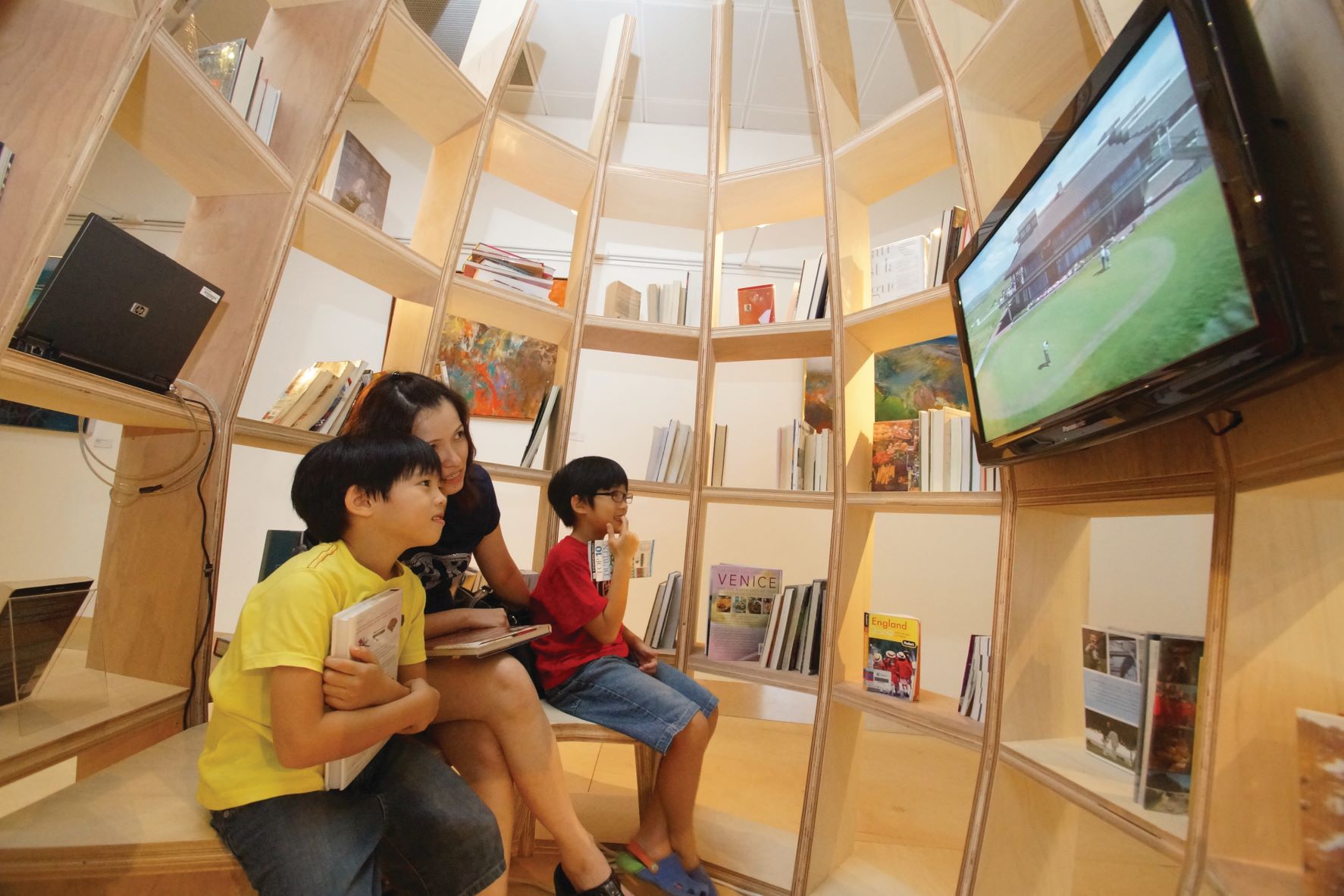
Looking towards the future and the implementation of the new plan is both exciting and challenging for public libraries. Change is constant and we look forward to the various programmes that will be carried out with enthusiasm.
REFERENCES
Caron, D.J. (2012, May 31). Finding our place on the digital shelf [Speech delivered at the Canadian Library Association National Conference. Ottawa, Ontario]. Retrieved from Libraries and Archives Canada website.
Library 2000 Review Committee. (1994). Library 2000: Investing in a learning nation: Report of the Library 2000 Review Committee. Singapore: SNP Publishers. (Call no.: RSING q027.05957 SIN)
Lim, J. (2013, April). Future public libraries: A lifestyle approach to reading and learning.
Seet, K.K. (1983). A place for the people. Singapore: Times Books International. (Call no.: RSING 027.55957 SEE)
Tan, J., & Taha, L. (2013). Icons of learning: The Redesign of the Modern Library. BiblioAsia, 9 (1), 24–29. Retrieved from BiblioAsia website.
NOTES
-
Library 2000 Review Committee, 1994. ↩
-
Tan and Taha. Icons of learning. BiblioAsia, Vol 9 Iss 1; also Caron, D.J., 2012. ↩
-
Lim, J, 2013.</center></center> ↩

